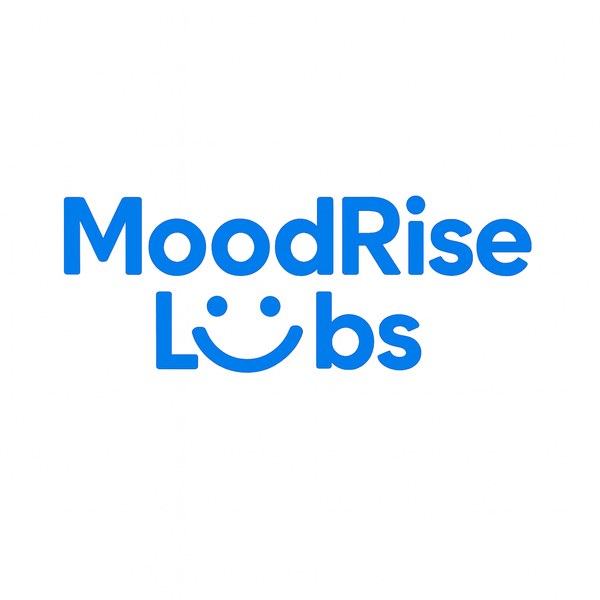Why Some People Are More Prone to Panic Attacks
Introduction
Panic attacks can feel like being swept away by a storm inside your body—your heart races, your breath shortens, dizziness sets in, and your mind spirals into catastrophic thinking. For some people, panic strikes once or twice in a lifetime; for others, it becomes a recurring challenge that disrupts work, relationships, and self-confidence.
But why are some people more prone to panic attacks than others? The answer is complex. Genetics, brain chemistry, early experiences, trauma, personality traits, and lifestyle choices all play a role. While panic attacks can feel like a mystery, science reveals clear risk factors and mechanisms that make certain individuals more vulnerable.
This article explores the biology, psychology, and environment behind panic proneness, while also providing practical strategies—including supplements, therapy, and breathwork—to build resilience and reduce risk.
Looking for online therapy for people with Anxiety? Click Here.
🌪️ What Is a Panic Attack?

A panic attack is a sudden surge of intense fear or discomfort that peaks within minutes. Symptoms include:
- Racing heart (palpitations)
- Shortness of breath or choking sensation
- Sweating, trembling, or shaking
- Chest pain or discomfort
- Dizziness or fainting
- Numbness or tingling
- Fear of losing control, going crazy, or dying
Panic attacks are not “all in your head.” They are full-body stress responses driven by the autonomic nervous system and amplified by the brain’s fear circuits.
🧠 The Brain and Nervous System in Panic
Two brain regions are key in panic attacks:
Amygdala (fear center): Overreacts to perceived threats, triggering the fight-or-flight response.
Prefrontal cortex (logic center): Normally regulates fear, but under stress its influence weakens.
When stress hormones like cortisol and adrenaline surge, the amygdala dominates, leading to the cascade of symptoms known as a panic attack.
🧬 Genetic Vulnerability
Research suggests that panic disorder and anxiety run in families. Twin studies show that if one identical twin experiences panic, the other has a higher-than-average chance of experiencing it too.
Genetic factors influence:
Neurotransmitter balance (GABA, serotonin, norepinephrine).
Cortisol reactivity of the HPA axis.
Personality traits like neuroticism (sensitivity to stress).
This doesn’t mean panic is predetermined—but some people are wired to be more sensitive.
👶 Early Life Experiences and Trauma
Childhood experiences strongly shape nervous system resilience.
Childhood trauma (abuse, neglect, loss): Increases risk of panic in adulthood.
Overprotective or critical parenting: May reduce a child’s ability to self-soothe.
Early separation anxiety: Linked to higher likelihood of panic disorder.
Trauma “primes” the amygdala to overreact later in life.
🧪 Neurotransmitter Imbalances
Low GABA
GABA is the brain’s main inhibitory neurotransmitter—its “brake system.”
Low GABA = more nervous system excitability → more prone to panic.
Serotonin Dysregulation
Influences mood, fear response, and emotional regulation.
Many panic medications target serotonin (SSRIs).
Norepinephrine Overactivity
Too much norepinephrine = exaggerated fight-or-flight response.
This neurochemical trio—low GABA, low serotonin, high norepinephrine—makes the brain more panic-prone.
💓 Personality Traits and Temperament
Some people are naturally more sensitive to stress.
High neuroticism: Strong emotional reactivity.
Perfectionism: Fear of failure can trigger panic spirals.
High sensitivity (HSPs): Nervous system absorbs more stimulation.
Introversion + social anxiety: Panic more likely in social settings.
These traits don’t cause panic by themselves, but they make the body more likely to overreact under pressure.
🩺 Medical Conditions and Panic

Sometimes, panic proneness is linked to underlying conditions:
Thyroid disorders (hyperthyroidism): Can mimic panic symptoms.
Hypoglycemia (low blood sugar): Triggers adrenaline surges.
Mitral valve prolapse (MVP): Linked to higher panic rates.
Asthma or breathing disorders: Sensations of breathlessness can trigger panic.
Medical screening is important when panic symptoms are frequent.
☕ Lifestyle Triggers
Even without genetic or trauma factors, lifestyle can make panic more likely:
Caffeine: Stimulant that mimics anxiety (jitteriness, palpitations).
Alcohol: Short-term relaxation, long-term cortisol spikes.
Sleep deprivation: Reduces prefrontal cortex regulation of fear.
Poor diet: Blood sugar swings trigger adrenaline surges.
Sedentary lifestyle: Reduces stress resilience.
Lifestyle doesn’t cause panic alone but can tip vulnerable people into attack mode.
🌬️ Why Some Brains Misinterpret Normal Sensations
One hallmark of panic disorder is catastrophic misinterpretation.
For example:
Slight chest pain → “I’m having a heart attack.”
Faster heartbeat → “I’m going to die.”
Dizziness → “I’m losing control.”
People prone to panic often misread harmless body sensations as catastrophic, creating a feedback loop: fear → symptom → more fear → panic attack.
🌱 Supplements for Panic-Prone Individuals
Magnesium Glycinate
Calms nervous system by supporting GABA.
Reduces muscle tension and cortisol.
L-Theanine
Boosts alpha brain waves, promotes calm focus.
Reduces glutamate overactivity.
Omega-3s
Stabilize mood and reduce inflammation.
GABA-Boosting Herbs
Valerian, passionflower, lemon balm → increase GABA activity.
Adaptogens
Ashwagandha and rhodiola buffer stress and lower cortisol.
Supplements aren’t cures but they strengthen the body’s buffer system against panic triggers.
Looking for supplements for people with Anxiety? Click here.
🌬️ Breathwork as a Panic Reset

Breath is the fastest way to calm panic because it directly influences the nervous system.
Physiological sigh 😮💨 → Lowers panic within minutes.
Box breathing ⬛ (4-4-4-4) → Grounds the body.
Resonance breathing 🌊 (5–6 breaths/min) → Improves HRV, long-term resilience.
For panic-prone people, daily breathwork is like exercise for the nervous system.
Want to try Breathwork? Click Here.
🛋️ Therapy for Panic Vulnerability
CBT: Challenges catastrophic thoughts.
Exposure therapy: Teaches the brain that feared sensations are safe.
Somatic therapy: Releases trauma stored in the body.
Mindfulness-based therapy: Builds tolerance to sensations without panic.
Therapy retrains the brain to stop misinterpreting harmless sensations.
Looking for online therapy for people with Anxiety? Click Here.
🕒 A Daily Routine for Panic-Prone Individuals
🌞 Morning
Warm water with lemon.
5 minutes resonance breathing.
Breakfast: protein + complex carbs (oats + chia + nuts).
Supplements: magnesium + Omega-3.
🌤️ Midday
Balanced lunch.
200 mg L-theanine before stressful situations.
2-minute mindfulness break.
🌙 Evening
Herbal tea (valerian + lemon balm).
Gentle stretching or yoga.
Journaling: gratitude + anxiety triggers reflection.
Magnesium glycinate before bed.
🚫 Mistakes Panic-Prone People Make
Over-caffeination → worsens symptoms.
Avoidance → reinforces fear.
Ignoring sleep → weakens resilience.
Taking too many supplements at once → inconsistency matters more.
🌟 Long-Term Outcomes
2–4 Weeks: Fewer adrenaline spikes, milder panic.
6–8 Weeks: Better sleep, reduced catastrophic thinking.
3–6 Months: Nervous system resilience improves; panic becomes less frequent.
🎤 Conclusion
Some people are more prone to panic attacks because of genetics, trauma, brain chemistry, or lifestyle—but vulnerability is not destiny. By combining adaptogens, magnesium, and GABA-supporting supplements with therapy, breathwork, and nutrition, you can retrain your nervous system to stay calm under pressure.
Panic-prone individuals often have sensitive, deeply perceptive nervous systems. With the right tools, that sensitivity can transform from a liability into a strength.
📚 References
Gorman, J. M., & Kent, J. M. (1999). Neuroanatomical hypothesis of panic disorder. American Journal of Psychiatry.
Hettema, J. M., et al. (2001). Genetic factors in anxiety disorders. American Journal of Psychiatry.
Bremner, J. D. (2006). Stress and brain atrophy. Biological Psychiatry.
Kimura, K., et al. (2007). L-Theanine reduces stress. Biological Psychology.
Chandrasekhar, K., et al. (2012). Ashwagandha and cortisol reduction. Indian Journal of Psychological Medicine.
Boyle, N. B., et al. (2017). Magnesium and stress regulation. Nutrients.
Hofmann, S. G., et al. (2010). CBT for panic disorder. Journal of Consulting and Clinical Psychology.
Brown, R. P., & Gerbarg, P. L. (2005). Breathwork for stress regulation. Journal of Alternative and Complementary Medicine.
Cryan, J. F., & Dinan, T. G. (2012). Stress and the brain. Nature Reviews Neuroscience.
Walker, M. (2017). Why We Sleep. Scribner.
Related Posts
-

Supplements for Staying Present and Grounded
L-Theanine is nature’s calm focus enhancer 🍃. Derived from green tea, it promotes relaxation without drowsiness by balancing GABA, serotonin, and dopamine. Learn how this amino acid supports smooth focus, emotional balance, and mindful presence in daily life.
-

Supplements That Support Emotional Openness
Emotional openness starts in the body 🌿. When your nervous system feels safe, your heart can express freely. Learn how supplements like magnesium, Ashwagandha, and L-theanine support calm connection, balanced emotions, and the courage to stay authentically open.
-
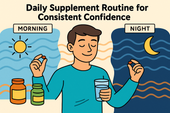
Daily Supplement Routine for Consistent Confidence
Confidence is built through rhythm, not luck 🌿. A daily supplement routine can help your energy, mood, and focus stay balanced from morning to night. Learn how adaptogens, magnesium, and B vitamins work together to create steady calm and lasting self-assurance.
-
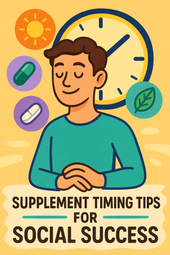
Supplement Timing Tips for Social Success
Social confidence has its own rhythm 🌿. When you time your supplements to match your body’s natural energy cycles, calm and focus align effortlessly. Learn how magnesium, L-theanine, and adaptogens can help you stay grounded, charismatic, and fully present at just the right moment.
-
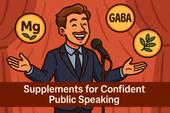
Supplements for Confident Public Speaking
Public speaking confidence begins with biology 🎤🌿. When your nervous system is calm and your neurotransmitters are balanced, your voice, focus, and presence flow naturally. Learn how supplements like magnesium, GABA, and adaptogens can align your body’s chemistry with the calm clarity you need to speak authentically.
-

Travel-Friendly Supplements for On-the-Go Confidence
Magnesium is the ultimate travel mineral for calm and balance ✈️🌿. It relaxes the nervous system, eases stress from jet lag or fatigue, and supports muscle and mental recovery. Discover how this essential nutrient keeps you centered, focused, and energized wherever your journey takes you.
-

Supplements for Confident Video Calls
Magnesium is the mineral that brings calm to both body and mind 🌿. It supports relaxation, better sleep, and a stable mood by regulating cortisol and soothing the nervous system. Learn how magnesium supplements can restore balance, reduce anxiety, and help you feel centered under stress.
-

Ashwagandha for Calming the Stress Response
Ashwagandha helps your body remember how to relax 🌿. As one of the most trusted adaptogens, it calms the stress response by lowering cortisol, soothing the nervous system, and restoring natural energy balance. Learn how this ancient herb promotes deeper sleep, emotional steadiness, and resilience in today’s high-stress world.
-

How GABA Supplements Can Help You Feel Grounded
GABA is the brain’s natural calm signal 🌿. When life feels overwhelming, this neurotransmitter helps quiet mental noise, relax muscles, and restore emotional balance. Learn how GABA supplements can calm the nervous system, reduce anxiety, and help you feel grounded in your body again.
-
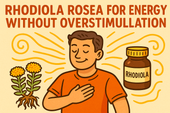
Rhodiola Rosea for Energy Without Overstimulation
Rhodiola rosea offers a rare kind of energy — one rooted in calm, not chaos 🌿. Known as the golden root, this adaptogen enhances endurance, focus, and mood by balancing cortisol and supporting the nervous system. Discover how Rhodiola restores natural vitality without the overstimulation of caffeine or stress-driven fatigue.
-
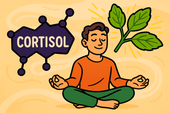
Holy Basil and Cortisol Control
Holy basil, or Tulsi, is one of nature’s most powerful adaptogens 🌿. Revered in Ayurvedic medicine for centuries, it helps balance cortisol, calm the mind, and protect the body from stress. Learn how holy basil restores hormonal harmony, supports energy, and promotes emotional resilience in a fast-paced world.
-
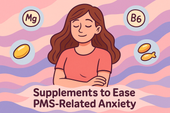
Supplements to Ease PMS-Related Anxiety
Hormones are the body’s messengers — guiding mood, energy, metabolism, and balance. 🌿 When these chemical signals flow in harmony, life feels stable and calm. Learn how nutrients, sleep, and stress management help keep hormonal communication clear, supporting emotional steadiness and overall vitality.
-
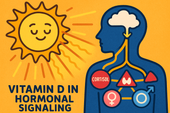
The Role of Vitamin D in Hormonal Signaling
Testosterone is more than a hormone — it’s a signal of strength, motivation, and vitality 💪. Learn how this key molecule shapes energy, mood, muscle growth, and focus in both men and women. Discover how nutrition, vitamin D, and minerals like zinc and magnesium support healthy testosterone signaling for balanced power and performance.
-

Magnesium for Hormonal and Nerve Function
Magnesium is the mineral that connects calm and vitality ⚡. It fuels nerve transmission, supports hormonal balance, and restores the body’s ability to relax under stress. Learn how magnesium strengthens communication between the nervous and endocrine systems, stabilizing cortisol, thyroid, and reproductive hormones for true equilibrium.
-

Zinc and Its Role in Hormonal Stability
Zinc is one of the body’s most powerful regulators ⚖️—a trace mineral that keeps hormones, metabolism, and energy in perfect rhythm. Learn how zinc supports testosterone, thyroid function, cortisol balance, and emotional stability while protecting against modern stress and deficiency. Discover why restoring zinc can help your body feel grounded, focused, and hormonally resilient.
-
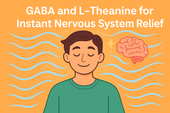
GABA and L-Theanine for Instant Nervous System Relief
When stress hits, your nervous system needs relief — not more stimulation 🌿. Discover how GABA and L-theanine work together to calm the body, quiet racing thoughts, and restore inner balance. Learn the science behind these natural compounds that ease tension, support emotional stability, and bring instant peace without sedation.
-
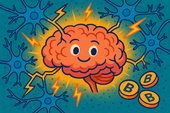
B-Vitamins for Faster Nerve Communication
Vitamin B1, or thiamine, is your brain’s ignition key 🔑—turning food into cellular energy and powering rapid nerve signaling. Discover how this essential nutrient fuels neurotransmitter activity, supports focus and coordination, and prevents fatigue or mental fog. Learn why maintaining optimal thiamine levels keeps your nerves firing fast and your mind sharp.
-

Supplements That Help You Stay Alert Without Anxiety
L-theanine is nature’s secret for calm focus and balanced energy 🌿. Found in green tea, this gentle amino acid promotes relaxation, supports alpha brain waves, and helps you stay alert without stress or grogginess. Discover how L-theanine can enhance focus, improve sleep quality, and restore mental calm in a fast-paced world.
-
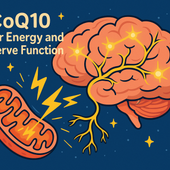
CoQ10 for Energy and Nerve Function
CoQ10 powers every cell in your body—from your heart to your brain ⚡. Learn how this essential compound fuels mitochondria, boosts nerve function, and protects your brain from oxidative stress. Discover how supplementing with CoQ10 can restore energy, sharpen focus, and support long-term neurological vitality.
-
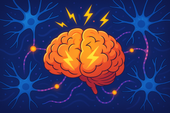
Supplements That Support Nerve Signaling for Mental Energy
Your brain’s electrical network depends on magnesium—one of the most vital minerals for nerve signaling, calm focus, and steady mental energy ⚡. Learn how this essential nutrient powers neurotransmission, supports relaxation, and helps protect your nervous system from stress overload—so your mind feels balanced, alert, and resilient every day.
-
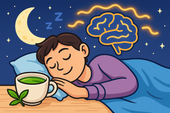
L-Theanine for Sleep Without Grogginess
L-theanine offers a natural path to better sleep—without the next-day fog. 🌙 Found in green tea, this gentle amino acid calms the mind, lowers stress hormones, and promotes deep relaxation without sedation. Learn how L-theanine balances your brainwaves, reduces nighttime anxiety, and helps you wake up refreshed, alert, and clear-minded.
-
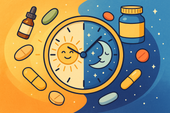
Supplements to Support the Circadian Rhythm
Your body’s natural clock depends on more than just sunlight—it also relies on key nutrients to stay in sync. 🌞🌙 Discover the best supplements to support your circadian rhythm, from melatonin and magnesium for deep sleep to vitamin D and adaptogens for morning energy. Learn how to realign your internal clock for better rest, sharper focus, and stable mood every day.
-
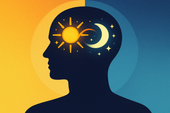
Melatonin and Cortisol: The Night vs. Day Hormones
Melatonin and cortisol are your body’s night-and-day hormones—one helping you drift into deep sleep, the other powering your alertness each morning. 🌙☀️ Learn how these two forces work together to regulate your energy, mood, and recovery. Discover how modern stress, artificial light, and poor routines can throw them off balance—and how to naturally reset your rhythm for calm nights and focused days.
-
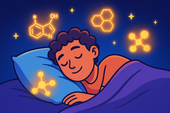
Supplements for Deeper Sleep and Nervous System Reset
Struggling to sleep even when you’re exhausted? 🌙 Discover how to reset your nervous system and achieve deeper, more restorative rest with the right blend of supplements, breathwork, and therapy. From magnesium and L-theanine to slow exhalations and somatic healing, this guide helps you rebuild your body’s natural rhythm of calm and recovery—so you can wake up truly renewed.
-
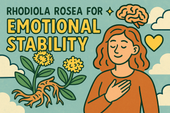
Rhodiola Rosea for Emotional Stability: Finding Balance Through Resilience
Stress is the body’s natural alarm system — useful in bursts, but draining when it never turns off. Learning to regulate it helps restore calm focus, emotional balance, and physical vitality. 🌿💫
-
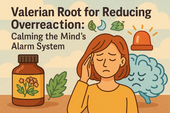
Valerian Root for Reducing Overreaction: Calming the Mind’s Alarm System
GABA is the brain’s natural brake pedal — calming overstimulation and helping you think clearly under stress. When balanced, it brings a sense of inner peace, emotional control, and focus. 🌿🧠💫
-

Supporting Adrenal Health for a Steadier Mood
Cortisol is the body’s built-in stress alarm — essential in short bursts but harmful when constantly elevated. Learning to balance it naturally restores calm, focus, and emotional stability. 🌿⚖️
-
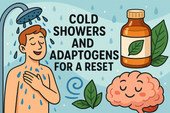
Cold Showers and Adaptogens for a Reset: Reclaiming Energy, Calm, and Control
Adaptogens help the body adapt to stress, restoring calm energy and balance. These ancient herbs strengthen resilience, regulate mood, and support focus — helping you stay grounded through life’s ups and downs. 🌿💫
-
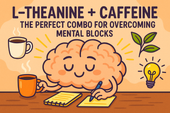
L-Theanine + Caffeine: The Perfect Combo for Overcoming Mental Blocks
Neurotransmitters are the brain’s messengers — tiny molecules that shape how we think, feel, and focus. When they’re in balance, we experience calm energy, clear thinking, and emotional harmony. 🌿🧠✨
-

How Magnesium Supports Focus and Reduces Procrastination Fatigue
Magnesium is the quiet mineral behind mental clarity and steady focus. By calming the nervous system and restoring cellular energy, it helps transform fatigue and overthinking into calm, productive flow. 🌿⚡🧠
-

B Vitamins for Beating Procrastination and Boosting Energy
Procrastination isn’t just a mindset — it’s often a signal of low energy and nutrient depletion. B vitamins recharge the brain’s motivation circuits, boosting focus, clarity, and the drive to take action. 🌿⚡🧠
-
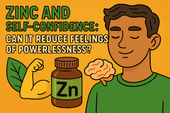
Zinc and Self-Confidence: Can It Reduce Feelings of Powerlessness?
Zinc isn’t just a mineral — it’s the foundation of emotional strength. By balancing neurotransmitters and calming the nervous system, it helps you feel more centered, assertive, and confident from the inside out. 🌿💪
-
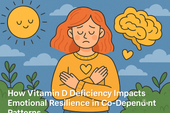
How Vitamin D Deficiency Impacts Emotional Resilience in Co-Dependent Patterns
Co-dependency is the emotional tug-of-war between connection and self-loss — a pattern born from giving too much and receiving too little. Learning to untangle this dynamic allows for real love rooted in balance, not fear. 🌿💛
-
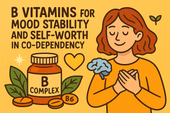
B Vitamins for Mood Stability and Self-Worth in Co-Dependency
Vitamin B1, or thiamine, powers both the body and the brain — fueling focus, energy, and emotional clarity. Supporting your nervous system with this essential nutrient helps restore calm and mental resilience. 🌿⚡🧠
-
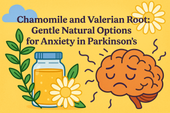
Chamomile and Valerian Root: Gentle Natural Options for Anxiety in Parkinson’s
Anxiety often feels like a storm inside the mind — racing thoughts, tightness, and unease that make it hard to focus or rest. But learning to understand and calm that inner storm opens the door to peace and emotional balance. 🌿🧠
-
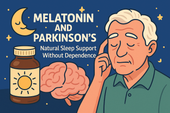
Melatonin and Parkinson’s: Natural Sleep Support Without Dependence
Melatonin is the body’s natural sleep hormone — guiding your mind into rest and your body into recovery. Supporting its natural rhythm can improve sleep quality, mood, and overall health without dependence. 🌙🧠
-
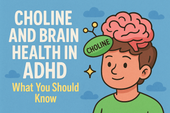
Choline and Brain Health in ADHD: What You Should Know
Inflammation can quietly affect both the body and mind, disrupting focus, mood, and energy. Understanding how it works — and how to calm it — is key to restoring balance, clarity, and long-term health. 🌿🧠
-
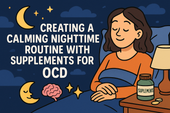
Creating a Calming Nighttime Routine with Supplements for OCD
Sleep is the brain’s nightly repair ritual — a time when emotional chaos settles and clarity returns. Prioritizing deep rest restores focus, calm, and resilience, helping both the body and mind recover naturally. 🌙🧠
-
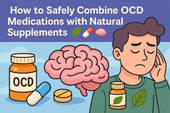
How to Safely Combine OCD Medications with Natural Supplements
Supplements bridge the gap between nutrition and mental wellness — supporting focus, calm, and energy from within. The right combination of nutrients can help balance mood, sharpen the mind, and restore long-term resilience. 🌿🧠
-
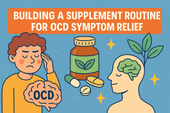
Building a Supplement Routine for OCD Symptom Relief
OCD can feel like being trapped in your own thoughts — a battle between control and chaos. Understanding the science behind these cycles is the first step toward breaking free and finding calm within the mind. 🌿🧠
-
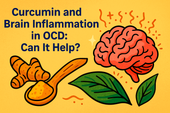
Curcumin and Brain Inflammation in OCD: Can It Help?
Inflammation doesn’t just affect the body — it can silently influence the brain, fueling anxiety, fatigue, and mental fog. By understanding how inflammation works, we can learn how to calm the nervous system and restore inner balance. 🌿🧠
-
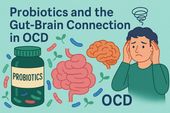
Probiotics and the Gut-Brain Connection in OCD
Serotonin, often called the “feel-good” chemical, shapes our mood, focus, and emotional balance. By keeping this neurotransmitter in harmony, we support calm thinking, better sleep, and greater mental resilience. 🌿🧠
-

B Vitamins and OCD: Supporting Energy and Neurotransmitter Balance
OCD isn’t just about habits — it’s about the brain’s struggle to find control in chaos. Understanding the neurological roots behind intrusive thoughts can help replace fear with clarity and guide healing toward calm awareness. 🌿🧠
-
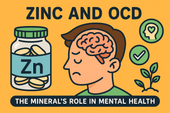
Zinc and OCD: The Mineral’s Role in Mental Health
Zinc is more than a trace mineral — it’s a key regulator of mood, memory, and emotional balance. By stabilizing neurotransmitters like serotonin and glutamate, zinc helps calm obsessive thought patterns and supports overall mental clarity. 🌿🧠
-
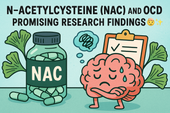
N-Acetylcysteine (NAC) and OCD: Promising Research Findings
Antioxidants act as the body’s natural defense system, neutralizing free radicals that damage brain cells and worsen anxiety or fatigue. Supporting antioxidant balance with nutrition and supplements helps protect focus, memory, and emotional stability. 🌿🧠
-
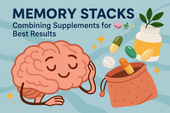
Memory Stacks: Combining Supplements for Best Results
Memory weaves the story of who we are — connecting past, present, and future through every experience we store and recall. Strengthening memory means nurturing the brain’s energy, balance, and emotional calm so learning becomes effortless. 🌿🧠
-
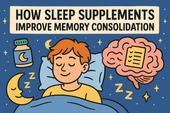
How Sleep Supplements Improve Memory Consolidation
Stress can cloud thinking, disrupt sleep, and weaken memory — but understanding its effects on the brain is the first step toward calm. By learning to regulate the nervous system, we can protect focus, energy, and emotional balance. 🌿🧠
-
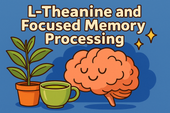
L-Theanine and Focused Memory Processing
Science is the art of curiosity and precision — a quest to understand the unseen patterns that shape life. From molecules to galaxies, every discovery begins with observation, imagination, and the courage to ask “why.” 🔬💡
-
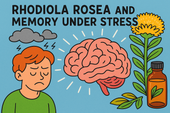
Rhodiola Rosea and Memory Under Stress
Stress clouds memory, slows thinking, and drains energy — but the good news is, the brain can recover. By understanding how stress affects focus and emotion, we can learn to regulate it, restore clarity, and protect long-term cognitive health. 🌿🧠
-
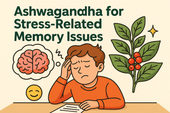
Ashwagandha for Stress-Related Memory Issues
Adaptogens are nature’s answer to modern stress. These powerful herbs — like Ashwagandha, Rhodiola, and Holy Basil — help balance cortisol, support calm focus, and strengthen the body’s resilience, bringing the mind back to harmony. 🌿🧘♀️
